Let’s Talk Contamination: Salmonella spp., 2009 – Peanut Corporation of America
It’s by learning from past crises that we can (perhaps) avoid future ones.
In this series of articles “Let’s Talk Contamination”, we hope to one day turn into podcasts, we aim to tell you the story of the most significant microbiological contaminations in recent years and any lessons learned (or not).
Let’s dive right in to the case of yet another peanut butter Samonella contamination, the Peanut Corporation of America episode!
This article was inspired and written with the support of François Bourdichon
Salmonella Outbreak in the USA: Mystery and Concern
The story begins at the end of 2008 in the United States, in uncertainty and anxiety for North American consumers.
Across the country, people of all ages begin to fall mysteriously ill. The symptoms, severe and alarming, point to food poisoning.
Hospitals record an unexplained increase of salmonellosis cases, a bacterial infection often linked to the consumption of contaminated food.
The victims, with no apparent link between them, share a disturbing common experience: A sudden and severe illness.
The FDA’s Investigation into the Peanut Butter-Linked Epidemic
Following this alarming wave of illnesses, the Centers for Disease Control and Prevention (CDC) and the Food and Drug Administration (FDA)1 launch an in-depth investigation.
The country’s top epidemiologists are on the case. Like detectives, they begin to trace the links between the cases, desperately searching for the source of the epidemic. At that time, there was still no complete genome sequencing to compare isolates, and everything was still done using PFGE (Pulsed-field gel electrophoresis).
Initial clues suggested a common culprit, already identified in the past: peanut butter.
Detailed interviews with the victims reveal that the majority of them had consumed peanut butter shortly before falling ill. However, identifying the specific product and the production site remains a Herculean task. More than 5,000 brands are involved. It is difficult to identify the common thread running through all the cases.
Food traceability becomes the key to the investigation, each lead guiding the investigators through the complex maze of food distribution in the USA.
The PCA Scandal: Salmonella contamination revelations
The investigation eventually converges on an unexpected source: the Peanut Corporation of America (PCA), a major player in the peanut butter industry, BtoB supplier to North America’s leading brands.
When inspectors enter PCA’s facilities, they discover a shocking scene. Deplorable hygiene conditions, outdated infrastructure, and evidence of rodent and insect infestation2.
But the most shocking revelation is yet to come: internal documents reveal that PCA was aware of the presence of Salmonella in their products3. They chose to ship them despite the positive tests.
The revelation of this negligence triggers a national scandal. The implications of this ethical and food safety failure are immense. As we’ll see later, this episode will change the face of USA food safety forever!
PCA’s “Retests”: An illegal and… criminal strategy
The Peanut Corporation of America (PCA) used the practice of the “retest”4 in the context of Salmonella contamination.
This practice, contrary to regulation, involved retesting batches of products that had initially been tested positive for the presence of Salmonella.
So, instead of destroying contaminated batches after an initial positive test, PCA had them retested, rejecting the initial results for no particular reason. Subsequent tests came back negative, and the company then shipped these products, despite the initially positive results.
This strategy, designed to avoid product losses, has been severely criticized for its illegality and indifference to public health risks.
Conviction and Fall of the PCA
The Peanut Corporation of America (PCA) case led to significant legal consequences. The company’s executives were tried and convicted for their roles in the Salmonella contamination scandal. Charges included fraud, conspiracy, and the introduction of contaminated food products into interstate commerce.
Stewart Parnell, the former CEO of PCA, was sentenced to a significant prison term5. His sentence was one of the most severe ever handed for a food safety case in the United States. Other members of the management and employees of PCA were also sentenced to prison terms for their role in concealing positive Salmonella tests and shipping contaminated products.
The Peanut Corporation of America (PCA) no longer exists today. Following the scandal and the legal consequences that ensued, PCA went bankrupt and ceased its operations.
This outcome was largely due to the scale of the scandal, massive product recalls, loss of consumer trust, and the heavy legal and financial consequences the company faced.
The closure of PCA is often cited as an example of the dramatic consequences that poor food safety management and unethical conduct can have on a company’s viability.
Deadly Consequences and Lessons in Food Safety
The PCA tragedy is not limited to the contamination of its products. Nine people lost their lives, and 714 others suffered from illnesses related to this contamination6.
The case raises critical questions about food safety practices in the industry and corporate responsibility towards consumers. The PCA was in fact in possession of all US-FDA certificates and certification systems, calling into question the relevance of a system that was too administrative and disconnected from the field.
The PCA scandal becomes a case study on the dangers of negligence in the food sector. It highlights the crucial need for stricter regulations, increased oversight, and total transparency in the food production chain.
This incident was the driving force behind President Barack OBAMA’s decision to initiate the Food Safety Modernization Act (FSMA, pronounced fizzma)7.
Enacted by President Barack Obama on January 4, 2011, the FSMA8 represents the most significant reform of food safety laws in the United States in over 70 years. The primary goal of the FSMA is to ensure the safety of the American food supply by focusing on preventing food contaminations rather than simply responding to them after they occur : Paradigm shift, still underway, from HACCP9 (assap) to HARPC10 (harp-ci)
This story, beyond its dark details, serves as an imperative reminder: food safety is a vital commitment that must come first over all other considerations in the agri-food industry.
Tell us in the comments which next “contamination” you would like to see in an episode of… “Let’s Talk Contamination”!
- FDA cites problems at peanut butter plant; recall expanded ↩︎
- Mold and Roaches Found in Peanut Butter Plant Linked to Salmonella ↩︎
- Peanut Company Knew Its Plant Was Contaminated With Salmonella ↩︎
- Peanut Corporation of America from Inception to Indictment: A Timeline ↩︎
- https://www.justice.gov/iso/opa/resources/61201322111426350488.pdf ↩︎
- Multistate Outbreak of Salmonella Typhimurium Infections Linked to Peanut Butter, 2008-2009 (FINAL UPDATE) ↩︎
- Background on the FDA Food Safety Modernization Act (FSMA) ↩︎
- Food Safety Modernization Act (FSMA) ↩︎
- Hazard Analysis Critical Control Point ↩︎
- Hazard Analysis and Risk-Based Preventive Controls ↩︎

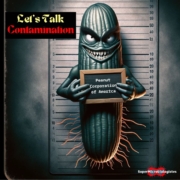

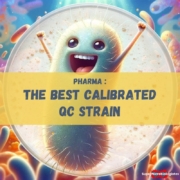

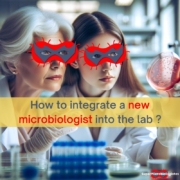
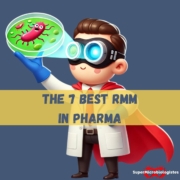
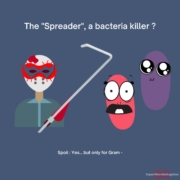
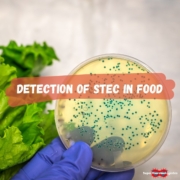








Leave a Reply
Want to join the discussion?Feel free to contribute!